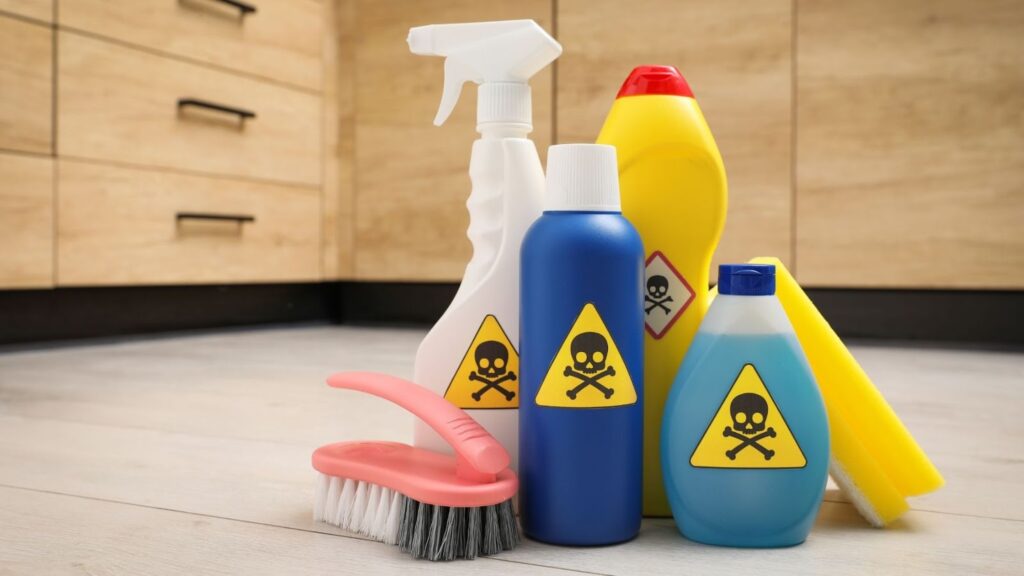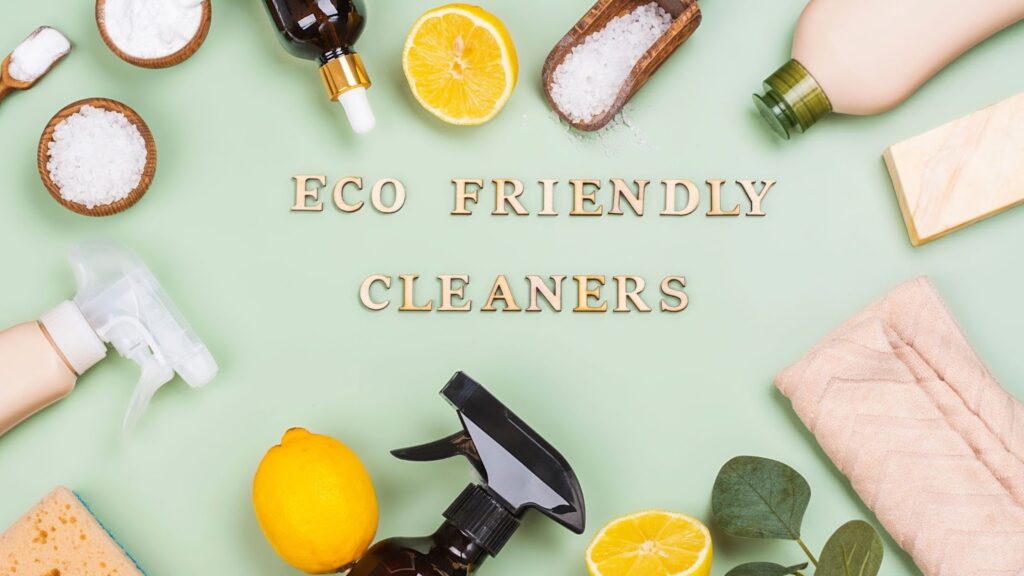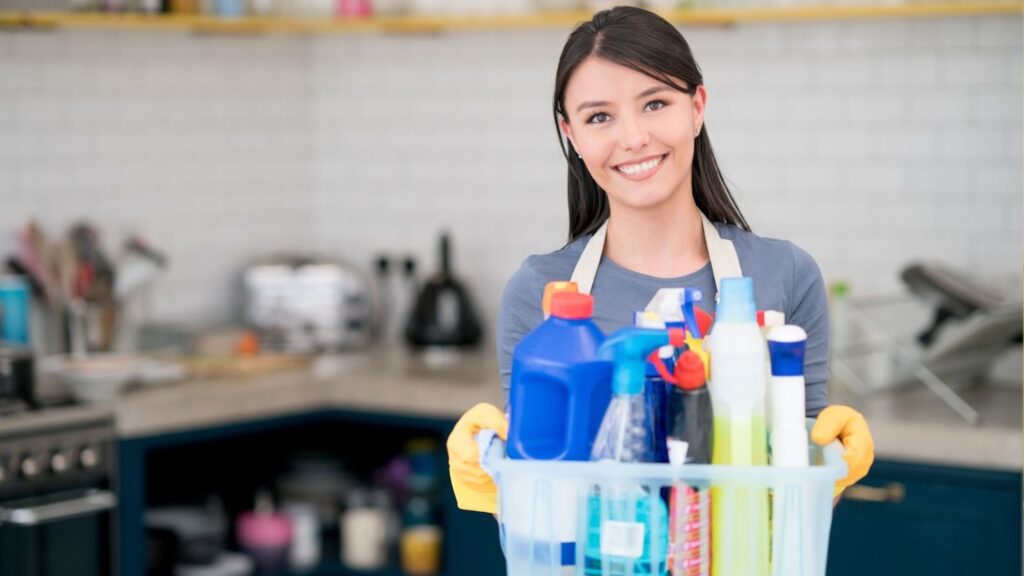Today, health and wellness are shining on all of our daily products, especially the cleaning products that keep our homes clean. People are increasingly discovering what defines a toxic cleaning product and what to look for in safer alternatives. Knowing what makes a product non-toxic or toxic is quite important knowledge to have if you have children or pets around the house.
Defining Non-Toxic and Toxic Cleaning Products
Non-toxic products cause little or no risk to humans or nature. Such products are usually prepared from natural ingredients, which are biodegradable and relatively safe for nature. Upon utilizing the non-toxic cleaning products, you will see ingredients such as vinegar, baking soda, lemon juice, and essential oils-substances that clean proficiently yet have no harmful side effects on the human body.
There are also Toxic Products, which include products carrying harmful chemicals that might lead to health hazards. Many cleaning products carry warning signs indicating risks to the individual who intends to use them. Many toxic cleaning agents contain surfactants, solvents, and preservatives that can cause respiratory problems, skin irritation, and other long-term health issues.

Habitual Toxic Ingredients to Avoid
Knowing what components to avoid will make you better equipped for making informed decisions:
- Bleach: Bleach is a very common household cleaner that effectively disinfects; however, it poses serious risks. Exposure can result in respiratory issues, eye irritation, and skin burns. Mixing bleach with ammonia or acidic cleaners creates dangerous gases.
- Ammonia: Ammonia is another highly commonly used cleaning agent. It is a potent irritant that can cause extreme respiratory distress, chemical burns, and eye damage. When exposed for a prolonged period, chronic lung conditions result.
- Phthalates and Parabens: Phthalates and Parabens are two chemicals widely used in fragranced cleaning products. They cause hormonal disorders and health problems associated with the human reproductive system. Specifically, phthalates interfere with the functioning of the endocrine system and pave the way for a series of unspoken health disorders.
- Scents: Most cleaning agents have artificial fragrances that may trigger allergies, asthma, and other respiratory conditions. The term “fragrance” may include thousands of undecipherable chemicals, of which nobody knows which one may be toxic.
How to Identify Non-Toxic Cleaning Products
You’ll need to know how to identify non-toxic products to make informed decisions.
Read the Label:
- Check for an explicit and comprehensive list of ingredients.
- Look for transparency in labeling; the more detailed, the better.
Avoid Vague Terms:
- Avoid products that include “fragrance” or “cleaning agents” without specifying the ingredients.
Look for Certifications:
- Green Seal:
- Certifies products that meet strict environmental standards.
- EPA Safer Choice:
- Indicates the presence of safer chemical ingredients in a product.
Research Brand Reputation:
- Consider brands known for their commitment to non-toxic formulations and sustainability.
Seek User Reviews and Recommendations:
- Check reviews from other consumers regarding the safety and effectiveness of the product.

Benefits of Using Eco-Friendly Cleaners
Using eco-friendly cleaners carries several health and environmental benefits:
Health Benefits: Non-toxic cleaning products do not efficiently contribute to allergen reactions, skin irritations, and breathing problems. Families with little kids or pets can be slightly comforted because their cleaning regime is nontoxic.
Environmental Impact: Non-toxic cleaning products tend to positively affect indoor air quality and the environment at large. These products minimize exposure to chemicals, creating a healthy living environment. In addition, they are biodegradable since they break down in the environment, hence gradually reducing pollution.
Family and Pet Safety: Non-toxic cleaners are especially valuable for families with children and pets. Poisoning accidents and chemical burns suddenly become much less likely with safer alternatives.
Homemade DIY Cleaning Solutions
If you care about the safety of pre-packaged products, make your own at home from scratch. Here are a few simple recipes:
All-Purpose Cleaner: Mix equal parts of water and vinegar in a spray bottle, and add a few drops of your favorite essential oil for fragrance.;
Bathroom Cleaner: One cup of baking soda, one cup of vinegar, and some tea tree oil make an excellent bathroom cleaner that can remove mold and mildew.
Glass Cleaner: Mix 1 cup of vinegar, 2 cups of water, and 1 tablespoon of cornstarch to get a streak-free shine on your windows.
Making your own cleaning solutions saves you money and lets you tweak scents and effectiveness to your taste.
Starting with Non-Toxic Cleaning Products
It doesn’t have to be painful to switch towards non-toxic cleaning products. Here are some recommendations to help ease that process:
Start Small: Change one product at a time, starting with the ones you use the most frequently, such as your kitchen and bathroom cleaners.
Gather a Non-Toxic Cleaning Kit: Provide your cleaning supplies with fundamental non-toxic ingredients, like vinegar, baking soda, and essential oils. These varied natural ingredients are often versatile and cover many cleaning applications.
Learn: Be educated on the products you are using. The more you learn about the harmful ingredients, the better your choices will be.
Ready to make your home a healthier place? Start by choosing non-toxic cleaning products today! Check out our recommended list of safe cleaning solutions and share your experiences in the comments below. Let’s create a cleaner, safer environment together!


